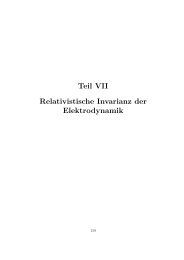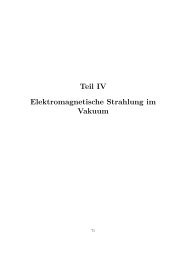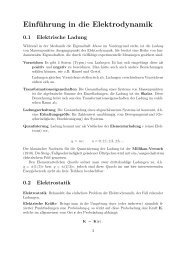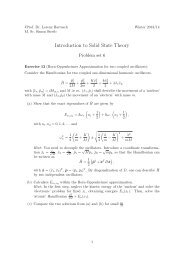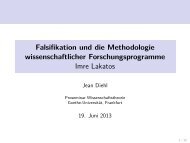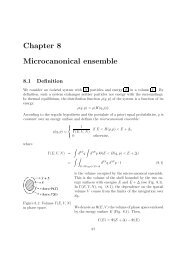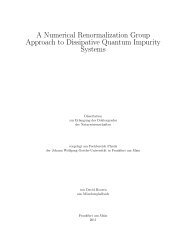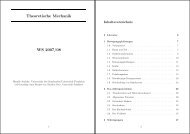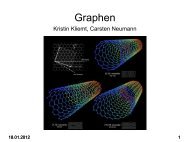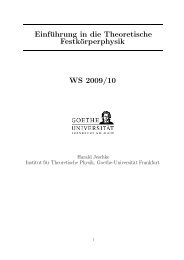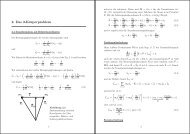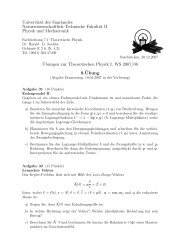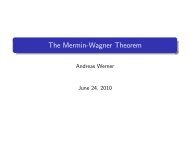Microscopic Modelling of Correlated Low-dimensional Systems
Microscopic Modelling of Correlated Low-dimensional Systems
Microscopic Modelling of Correlated Low-dimensional Systems
You also want an ePaper? Increase the reach of your titles
YUMPU automatically turns print PDFs into web optimized ePapers that Google loves.
Chapter 2: Method 17<br />
II<br />
I<br />
R<br />
α<br />
Figure 2.1: Schematic representation <strong>of</strong> the division <strong>of</strong> the unit cell done in APW/LAPW<br />
method.<br />
at the energy E. The requirement that the plane waves continue smoothly into the sphere<br />
<strong>of</strong> radius Rα fixes the expansion in spherical harmonics since a Y ℓmax<br />
m<br />
Rα<br />
has at most 2ℓmax<br />
zeros around the sphere or ℓmax/(πRα) nodes per unit <strong>of</strong> length, for a given ℓmax. In order<br />
to have a plane wave that matches with this, there should be plane waves with at least a<br />
similar number <strong>of</strong> nodes per unit <strong>of</strong> length available, therefore the plane wave expansion<br />
should have a cut-<strong>of</strong>f Kmax which satisfies the condition RαKmax = ℓmax. This allows to<br />
determine a good ℓmax for a given Kmax.<br />
This approximation allows for dramatic simplifications, since the wavefunctions can be<br />
represented in terms <strong>of</strong> the eigenstates in each region, reducing the entire problem into a<br />
matching or boundary condition problem. The disadvantage is the difficulty <strong>of</strong> matching<br />
the functions and solving the resulting non-linear equations in this basis.<br />
Its linearized version, suggested by Andersen [3], the linearized augmented plane waves<br />
method LAPW, including the full potential generalization 5 FP-LAPW, is the most accu-<br />
rate and general method for electronic structure at the present time. The calculations can<br />
be done for structures <strong>of</strong> arbitrary symmetry with no bias if the basis is extended to con-<br />
vergence. This method takes into account all the core states, so that it allows to describe<br />
effects like nuclear magnetic resonance chemical shifts, electric field gradients at the nucleus<br />
5 The full potential generalization consists in including the matrix elements <strong>of</strong> the full non-spherical potential<br />
∆V in the sphere and the full spatially varying potential in the interstitial. The basis functions are<br />
still the same LAPW (or LMTO), which are derived from a spherical approximation to the full potential.



